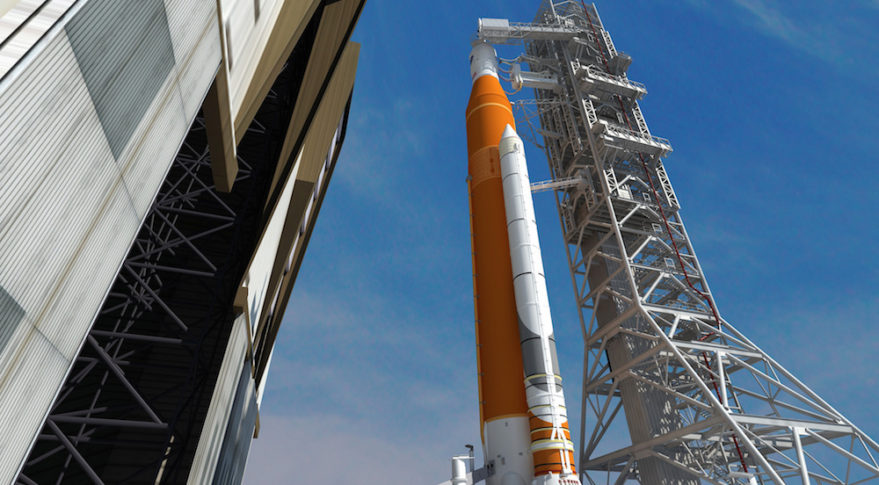First Launch of NASA's New Megarocket On Track for 2018

WASHINGTON — The first launch of NASA's Space Launch System heavy-lift rocket remains on schedule for the fall of 2018 despite delays in one key element of the Orion spacecraft it will launch.
Agency officials, speaking at a meeting of the NASA Advisory Council's human exploration and operations committee July 25 in Cleveland, said they were making good progress overall in the development of the various launch vehicle, spacecraft and ground systems components needed to support the launch of Exploration Mission 1 (EM-1).
"We believe we can still make the launch window of between September and November of 2018, and we're still working towards that," Bill Hill, deputy associate administrator for exploration systems development, said at the meeting.[NASA's SLS Megarocket in Pictures]
One challenge for that schedule is the delayed delivery of the service module for the Orion spacecraft, which is being provided by the European Space Agency. While the service module recently completed its critical design review, there are still some technical issues being studied, Bill Gerstenmaier, NASA associate administrator for human exploration and operations, said at the meeting.
"We had planned on getting the service module from the Europeans in January," he said. "We will now get that service module more likely in April. We're preparing for it to even be a little bit later than that."
Gerstenmaier added that delay will cause NASA to adjust the timing of other elements of overall EM-1 preparations to keep the mission on schedule. One possibility he said NASA was considering was to conduct a "wet dress rehearsal" of the SLS, where the rocket is brought out to the pad and fueled, without Orion.
"The teams are looking at the challenges of, 'Okay, the Orion won't be there as early as we thought, so what other activities can we do in front of that, that still make sense?'" he said. "You're seeing a lot of real-time planning."
Get the Space.com Newsletter
Breaking space news, the latest updates on rocket launches, skywatching events and more!
Gerstenmaier added he expects similar challenges when the various components of SLS come together. "We should see some problems throughout that whole activity as we do that work on the SLS," he said, particularly with outfitting the engine section in the rocket's core stage. "But we've got reasonable margins in our schedules."
An additional complication is uncertainty about funding for the program in 2017. Hill noted SLS and Orion received more funding than requested in 2016, and appropriations bills for 2017 pending in the House and Senate are "fairly good to us." However, he said NASA expects to spend the first three to six months of fiscal year 2017 on a continuing resolution, which will fund programs at 2016 levels.
"The biggest concern there is with our ground system funding," he said. NASA requested about $20 million more for ground systems in its 2017 request over what it received in 2016, an amount matched in the Senate bill but increased by an additional $55 million in the House bill.
That funding is needed for upgrades to support the Exploration Upper Stage, a new upper stage that NASA plans to use starting with the second SLS launch, no sooner than 2021. "We've really got to get started in '17 to make a launch in August of 2021," Hill said.
This story was provided by SpaceNews, dedicated to covering all aspects of the space industry.
Join our Space Forums to keep talking space on the latest missions, night sky and more! And if you have a news tip, correction or comment, let us know at: community@space.com.

Jeff Foust is a Senior Staff Writer at SpaceNews, a space industry news magazine and website, where he writes about space policy, commercial spaceflight and other aerospace industry topics. Jeff has a Ph.D. in planetary sciences from the Massachusetts Institute of Technology and earned a bachelor's degree in geophysics and planetary science from the California Institute of Technology. You can see Jeff's latest projects by following him on Twitter.
